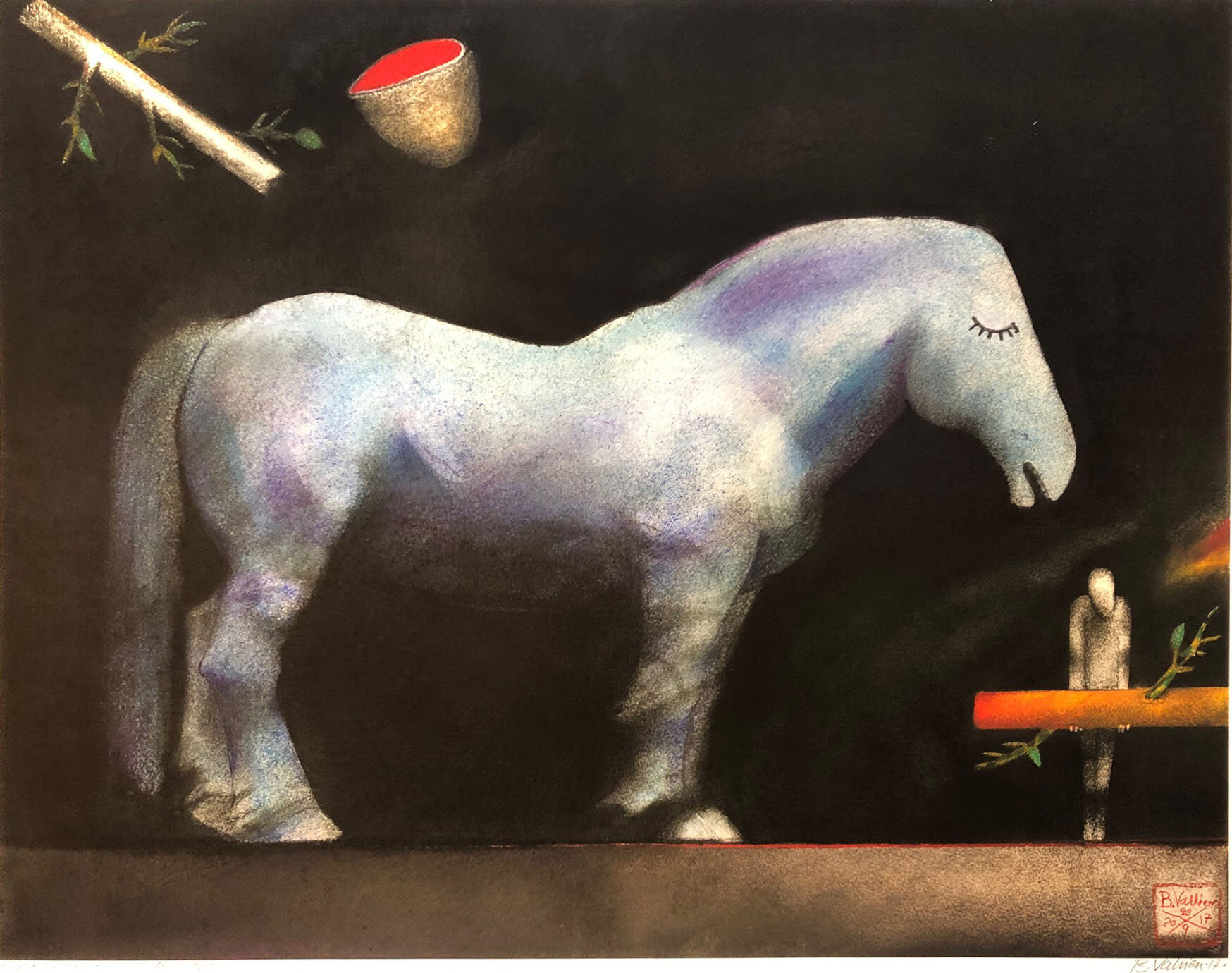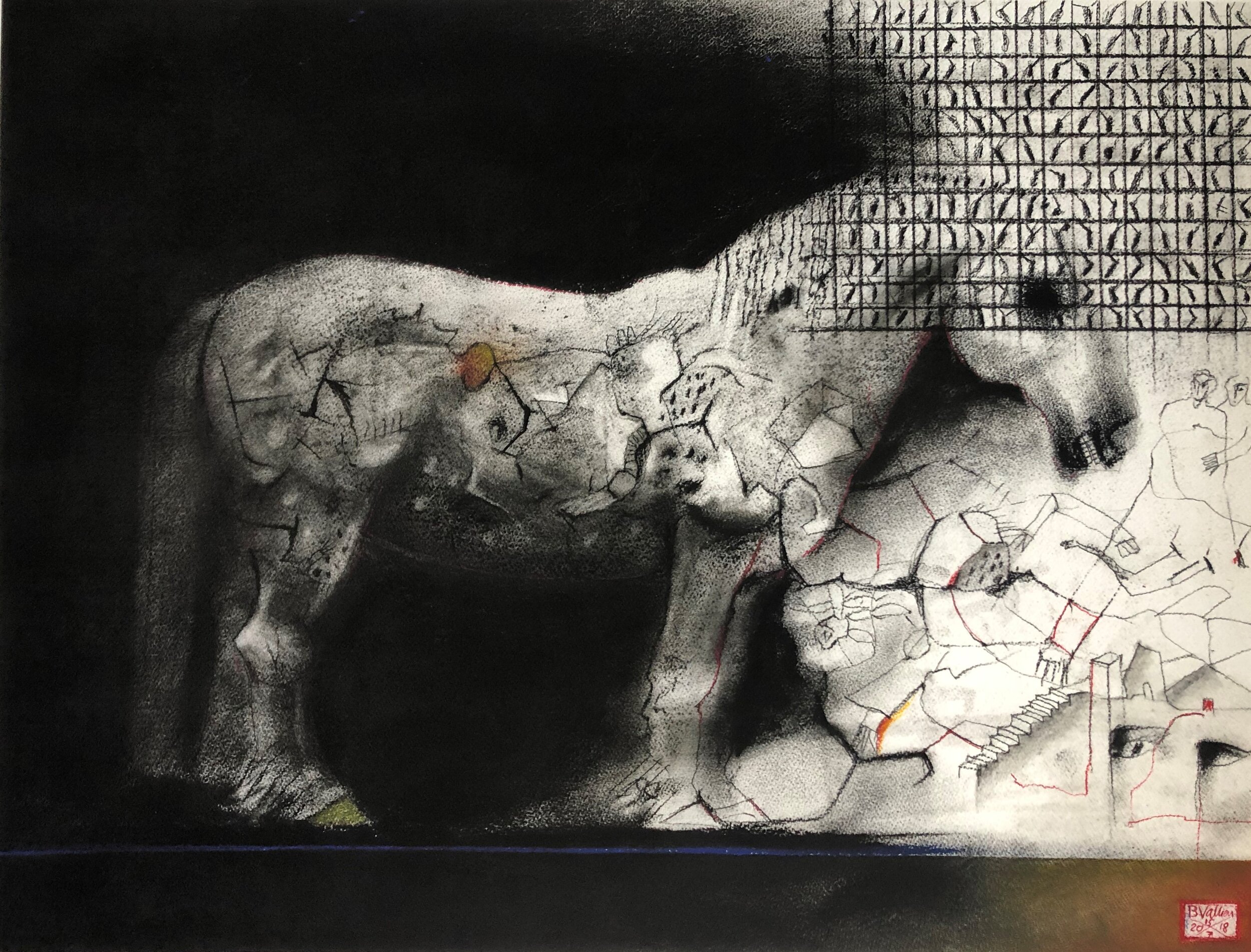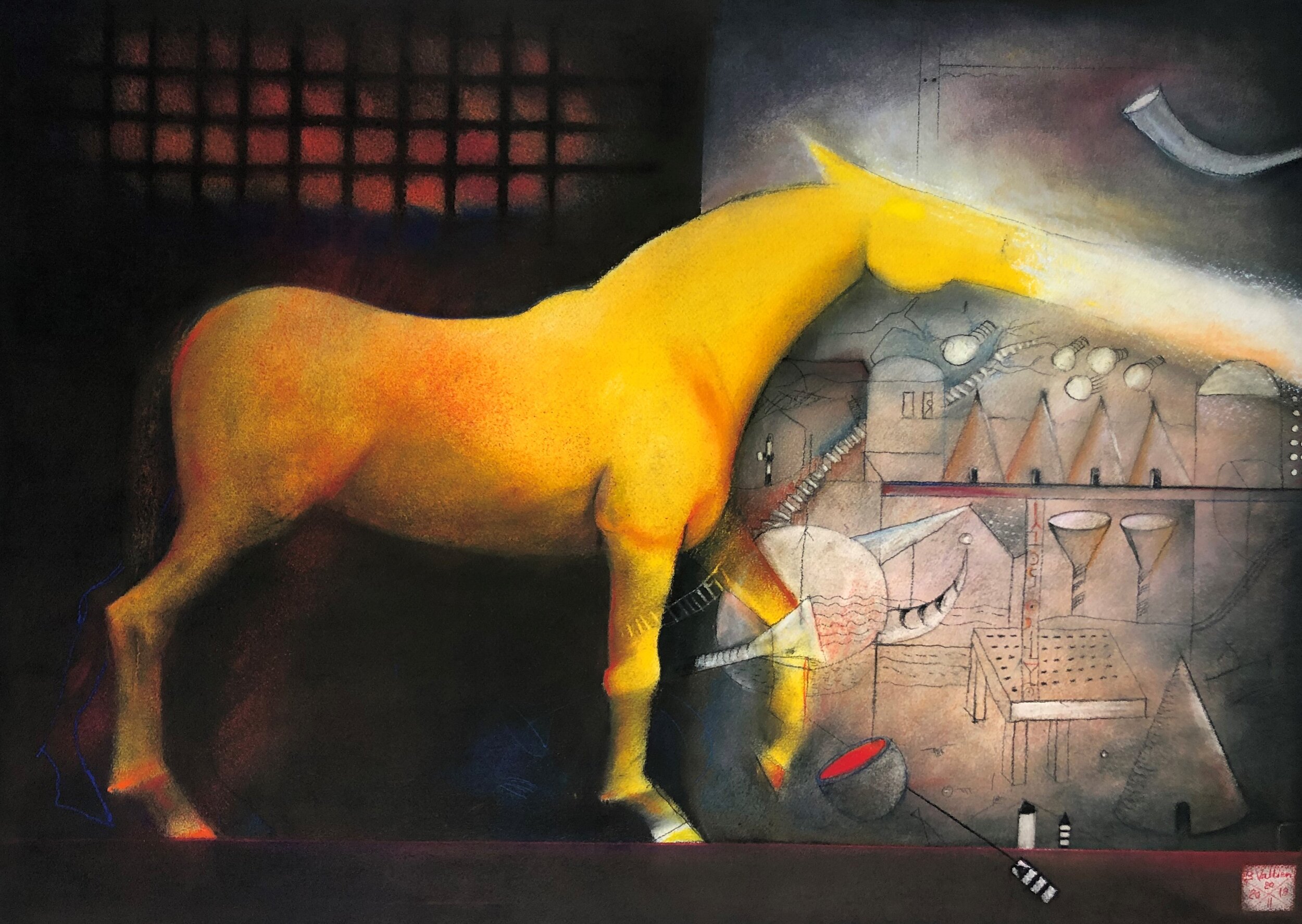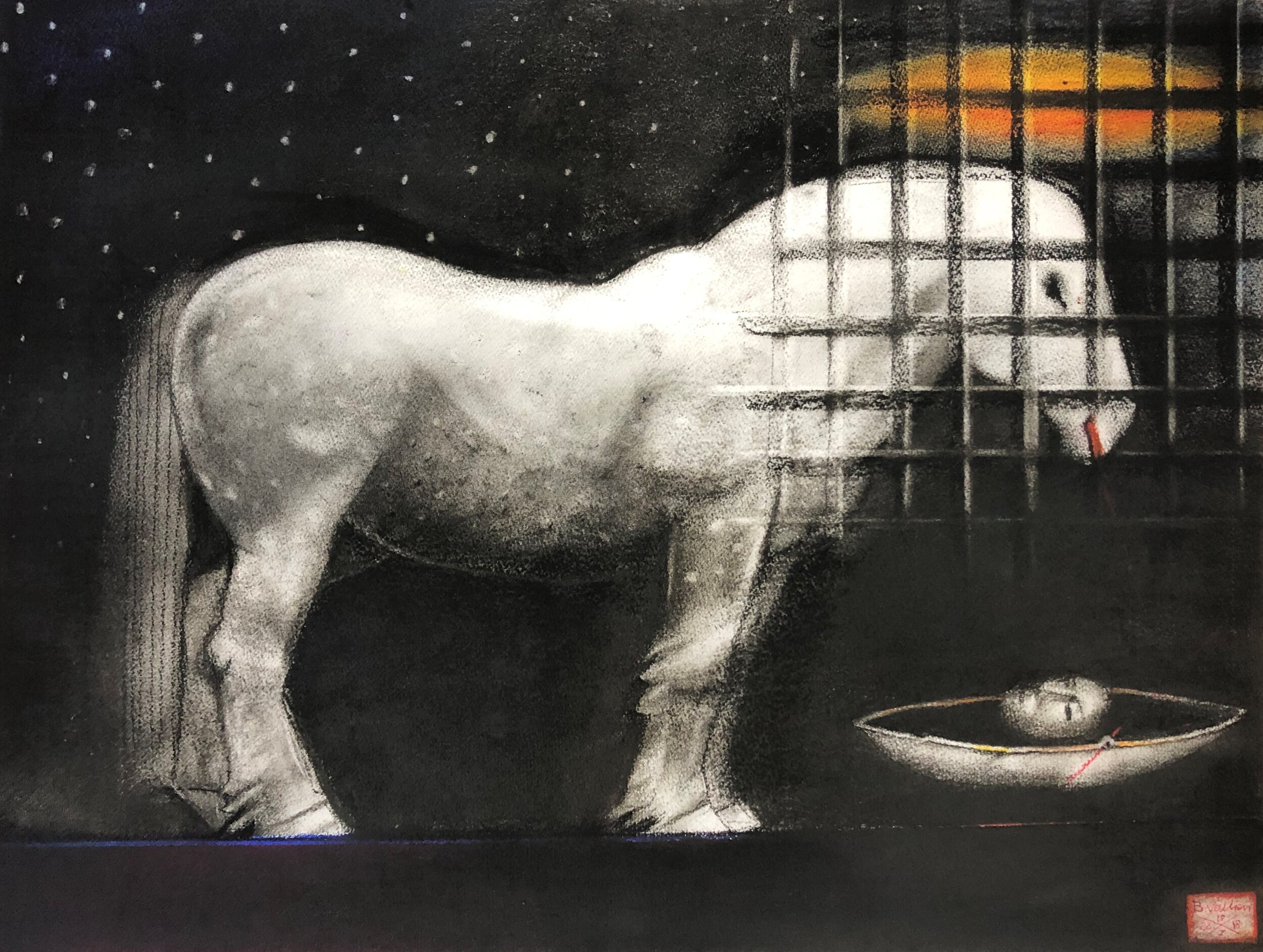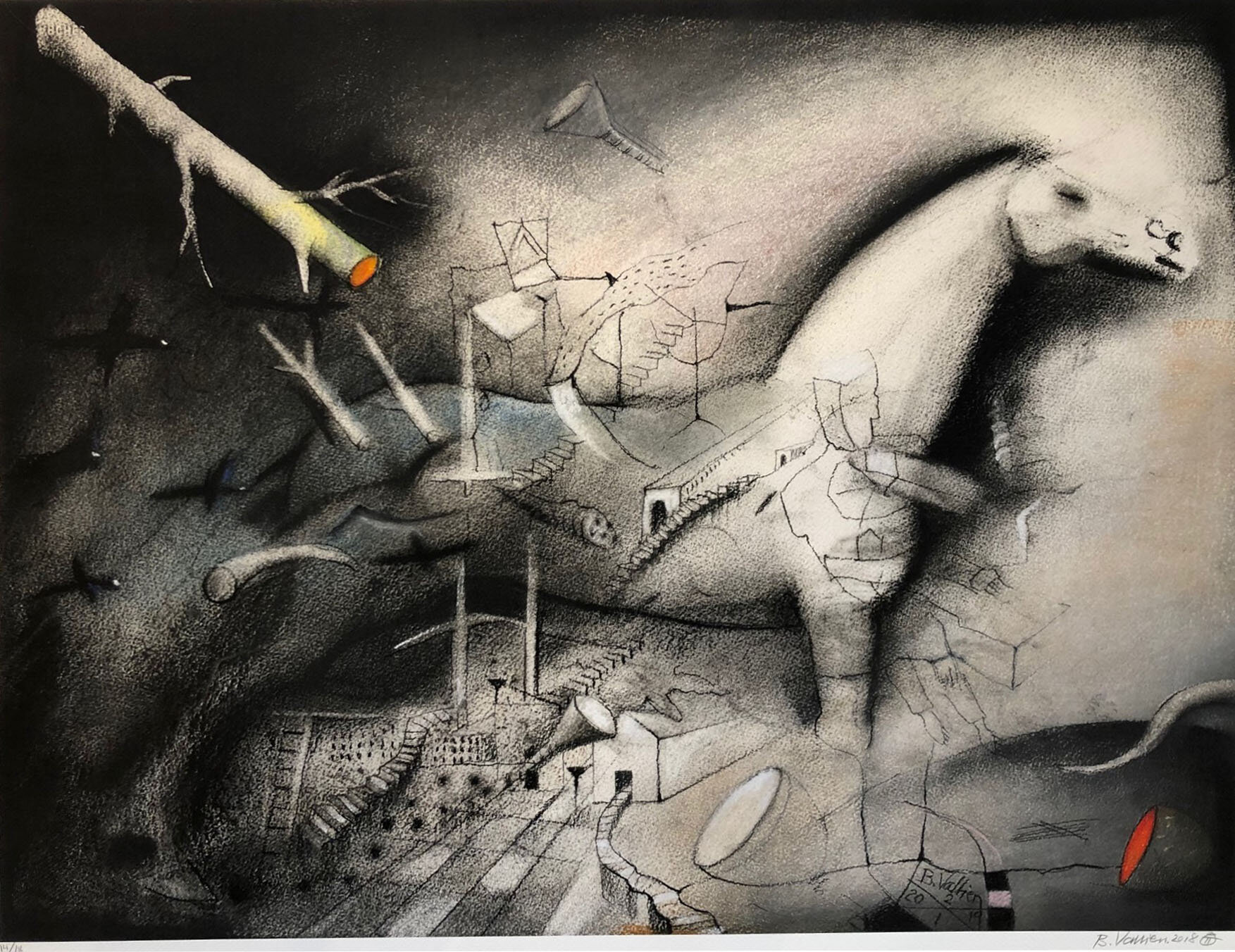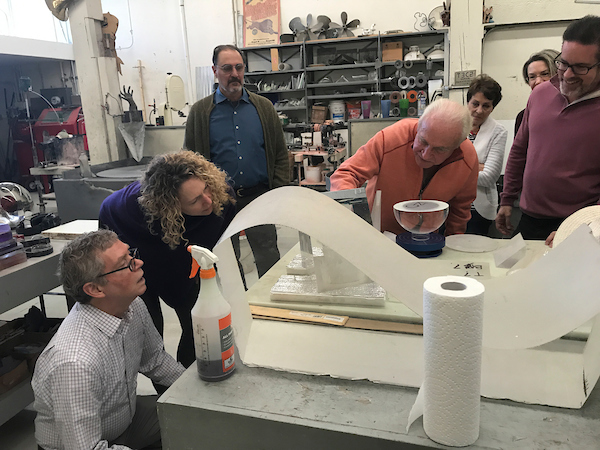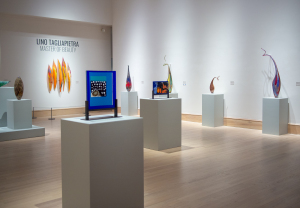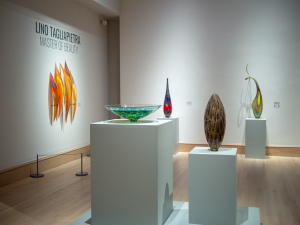Drawn to Glass at Schantz Galleries
Schantz Galleries is pleased Drawn to Glass, a group exhibition of thirteen unique glass artists strongly drawn to the narrative content of the medium. The exhibition will be on view at Schantz Galleries, located at 3 Elm Street, Stockbridge, MA, from May 11- 27, 2019. This exhibition is free and open to the public.
Stockbridge, MA As individual viewers, we approach works of art from our own unique perspectives, each of us recognizing our journey towards understanding of self and the world in a different story or subject. Art melds the personal and the universal, reflects our subconscious, and ignites our humanity—but this process looks different for everyone. The artists in Drawn to Glass— Paul Marioni, Dick Marquis, Charles Parriott, Preston Singletary, Lisabeth Sterling, April Surgent, Cappy Thompson, Veruska Vagen, Ulrica Hydman Vallien, Bertil Vallien, Jen Violette, David Walters, Hiroshi Yamano— represent an array of perspectives in the search for universal truth. Each one, through unique approaches to glass-making and unique narrative content, serves as a guide through the often-turbulent adventure we call life.
The breadth of ways that artists master the demanding medium of glass is exceeded only by the variety of narratives and subjects they use in search of answers to existential questions—what matters in life, what is our purpose, how do we achieve harmony? As individual viewers, we approach works of art from our own unique perspectives, each of us recognizing our journey towards understanding of self and the world in a different story or subject. Art melds the personal and the universal, reflects our subconscious, and ignites our humanity—but this process looks different for everyone. This range of voices represents a powerhouse of talent and ideology, each artist producing beautiful and provoking art.
Paul Marioni
Paul Marioni is a founding member of the American Studio Glass movement and in love with the medium for its distinct ability to capture and manipulate light. Techniques have been explored and mastered but always in service of ideas about the complexities and foibles of being human. No subject seems off limits to this artist-renegade-philosopher-humorist.
Richard Marquis
Inspiration is everywhere for Whidbey Island-based artist and feisty character, Richard Marquis. A virtuoso in murrine cane work and a pioneer in ceramic-based slab construction, Marquis also gives a nod to other crafts such as carpentry in his glass sculptures. A light-hearted, clever, and varied body of work is the result of years of practice, thoughtful control of the material, and boundless creativity. Elk Tower with Manikins is quintessentially Marquis—a wonderful composition of found objects around a centerpiece of repurposed cane pieces.
Charles Parriott
Combining surrealist imagery with the aesthetics of German Renaissance woodblock prints, Charles Parriott’s monochromatic glass panels are a compelling take on the medium. These works, which Parriott conceives, composes, and directs, are the result of a collaboration with master engraver Pavlina Čambalova, whom Parriott met on a Hauberg Fellowship at Pilchuck.
Preston Singletary
Turning molten liquid glass into meaningful form is a metaphor for the Native American mythology of transformation, where spirits take the form of animals, who then become symbolic guides on earth. Preston Singletary connects his personal cultural perspective on Northwest Native art to current modern art movements and European glass-blowing traditions.
Lisabeth Sterling
Lisabeth Sterling’s background in drawing is on exquisite display in her engraved glass works, the luminous colorless material layered with a rich contrasting hue to heighten the impact. As with the German Expressionists artists who inspire her, Sterling’s designs are an emotionally impactful, non-linear combination of human and natural elements, wreathed together beautifully around often uniquely shaped vessels.
April Surgent
April Surgent relishes in the evocative power of the visual to guide us to a deeper appreciation for the precariousness of both the earth and humanity. Her work is meditative and intimate, lusciously textured yet diaphanous, preserving poignant portraits of both the natural and human worlds. Bringing freshness to the traditional craft of wheel engraving and the millennials-long art of cameo engraving, Surgent’s white-capped blue glass canvases teem with expressionistic energy.
Cappy Thompson
Straightforward vase forms provide a blank slate for Cappy Thompson’s robust narrative imagery. Thompson tells tales which, while inspired by motifs, symbols, and fables from varied religious and cultural traditions, reflect the spiritual and emotional concerns of his own existence. Combining the flattened perspective and stylized naturalism of both folk and medieval art with purposeful coloration, Thompson offers allegories in glass which ultimately privilege beauty, goodness, and hope.
Veruska Vagen
Veruska Vagen’s painterly portraits in fused glass radiate warmth, evoking bygone eras and infusing them with fresh life. Her mosaic technique, which she named dot de verre, is a meticulous and methodical. These iconic images from the early -to-mid20th century are inspired by her grandmother, who she recently learned was a stage actress in Prague in the 1920’s.
Ulrica Hydman-Vallien
Bold black lines, a Fauvist palette, and distinct brushstrokes define the stylized drawings on glass of Swedish artist Ulrica Hydman-Vallien. Shapes of antiquity (Hydman-Vallien was originally a ceramicist and is well-versed in classic vase forms) are given modern touches (jug handles become ear-like protuberances) and adorned with contemporary expressionist drawing. Graphic faces and mythical motifs are distilled, sometimes down to a series of geometrical forms and lines, to intensify human emotions and eccentricities.
Bertil Vallien
Swedish artist Bertil Vallien takes viewers on a journey of interiority, his process of casting glass in sand and suspending objects in the molten glass resulting in geologic textures, mineral-like pigmentation, and interesting forms. Layers—both physical and psychological—are created through a multistep process that begins with carefully drawn blueprints. An exploration of the subconscious, a variety of universal archetypes and symbols allow viewers to layer on their own perspectives.
Jen Violette
Creativity is often sparked by the simplest pleasures, and for artist Jen Violette those pleasures include her gardens, her rural Vermont surroundings, and the natural world around her. Residing and working in an old farmhouse, with its connected studio, means living and breathing the inspirations for her art daily. In harmony with her surroundings, and together with the passion for painting and wood and metalworking that she learned from a young age, art feels very entwined with Violette’s life.
David Walters
David Walters begins by blowing a milky white glass into serpentine vessels—distorted eggs at times festooned with hats, hyperbolic pitchers and vases, toy cars, and other fantastic shapes. They become the canvas for his minimally-colored, exquisitely-rendered drawings. Though the work uses a deeply personal vocabulary, we are all able to relate to the struggle to overcome darkness and embrace the hope of the human spirit. Walters shows us that we need to look within, not without, to find our own fulfillment.
Hiroshi Yamano
Reverence for nature is a guiding principal in Japanese culture, while elegant restraint is a hallmark of their aesthetic. Hiroshi Yamano’s glass vessels are gorgeously painted with peaceful scenes of nature—unfurling blossoms, delicate birds, and striated skies. There is a sense of hushed movement, as the artist visually captures the poetry of flora and fauna and lures the viewer into an easy communion with nature.
Read more
